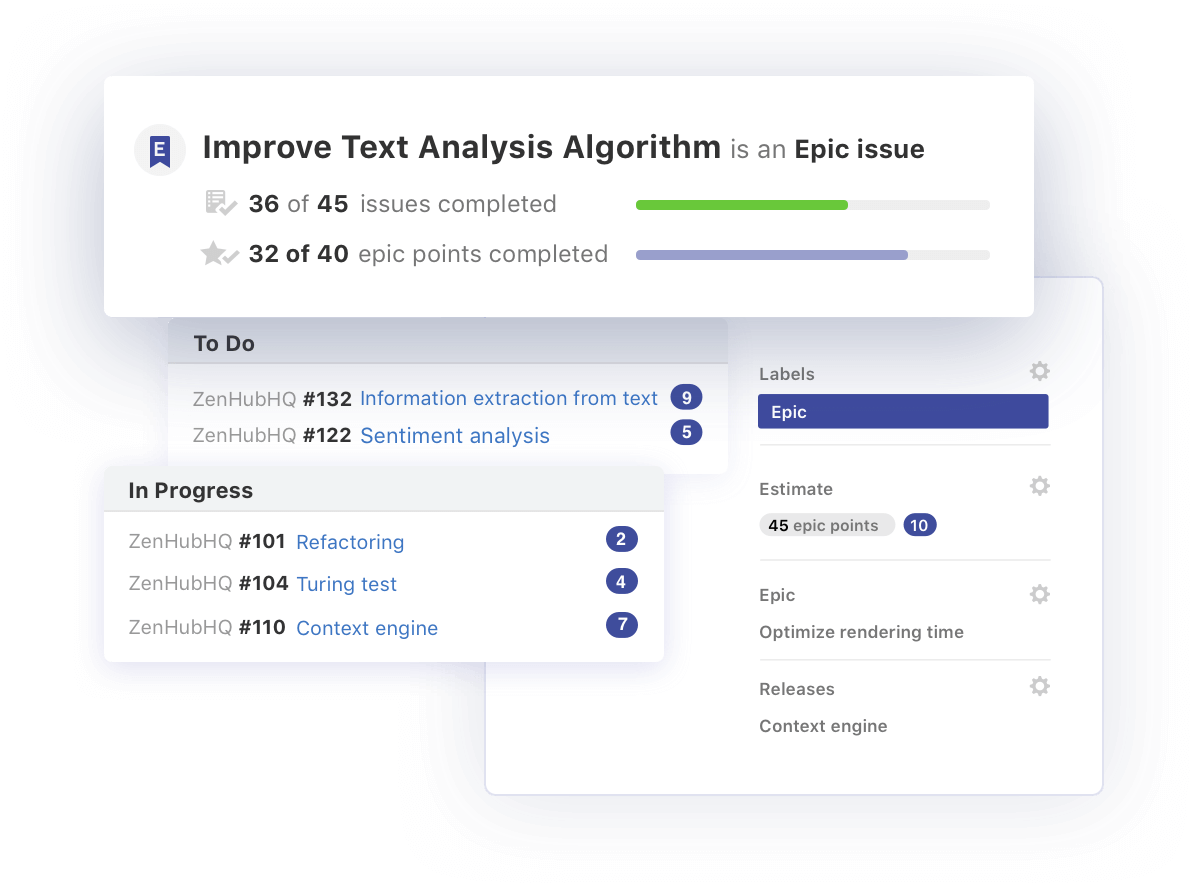
At Zensurance, we're building an intuitive and user centric product to help our customers buy the insurance they need to protect their small business.
We offer policies and coverages for over 50 different industries and trades, and are constantly improving our offerings. As such, our domain is extremely vast and modeling it is quite the engineering challenge. We have to handle the complexity that arises with different carriers, coverages, industries, and unique business operations when both matching coverages to a customer, and pricing them appropriately.
In order to deal with this complexity as a team we follow the golden rule of lean product development. We build and validate everything as quickly as we can by minimizing the build-measure-learn feedback loop.
Zensurance follows the scrum methodology for agile software development to organize our engineering teams. We started like many dev teams do, with Trello.. We could categorize items in our backlog with labels, assign them to members, and track our sprint progress with a few simple lists. As our tech team grew (from 3 to 12+), we experimented with various tools to help us organize our work and track our progress. We realized that we needed to store more information in our trello cards and adding plugins to Trello was becoming a pain. A more robust system would be needed. We decided to try out PivotalTracker.
We found the learning curve and the amount of configuration was overwhelming. Tickets we're out of date, or not synced correctly with our code base. We thought back on our engineering values, one of which is that:
If you want someone to do something, provide the path of least resistance.
We decided to move the primary issue tracking for the company to where the code and developers live. GitHub.
GitHub is more than just an online git repository. It's a tool that empowers development teams with issue tracking, collaborative coding, in-depth documentation, wikis and version controlled releases that seamlessly fit in with the engineering goals and values of our company.
At Zensurance, we value collaboration, transparency, documentation, and version control, and GitHub makes all of that easy. Given the centrality of GitHub to our development, it makes sense that the project management tool we fell in love with fits right on top of it. GitHub does have a built-in Trello-like project management offering but it was missing key features such as effort estimation, grouping of issues into epics, ordering of issues, and actionable reports which ZenHub fills in without being overbearing. You can enable/disabled any features you want from ZenHub and install a chrome/firefox plugin so everything is embedded seemlessly inside GitHub. We also love the name.
Now our project management boards are directly synced with our code base when an issue is in progress, in review, or has been closed/merged. We never have to guess at what is really going on and we've removed hundred of clicks and the mental overhead from our devs from having to sync up their task manager with their actual work.
As with any organizational changes adoption should be gradual and iterative. As we do with our product development, we also apply build-measure-learn to our internal processes. This is not the holy grail but it's working for us now!










